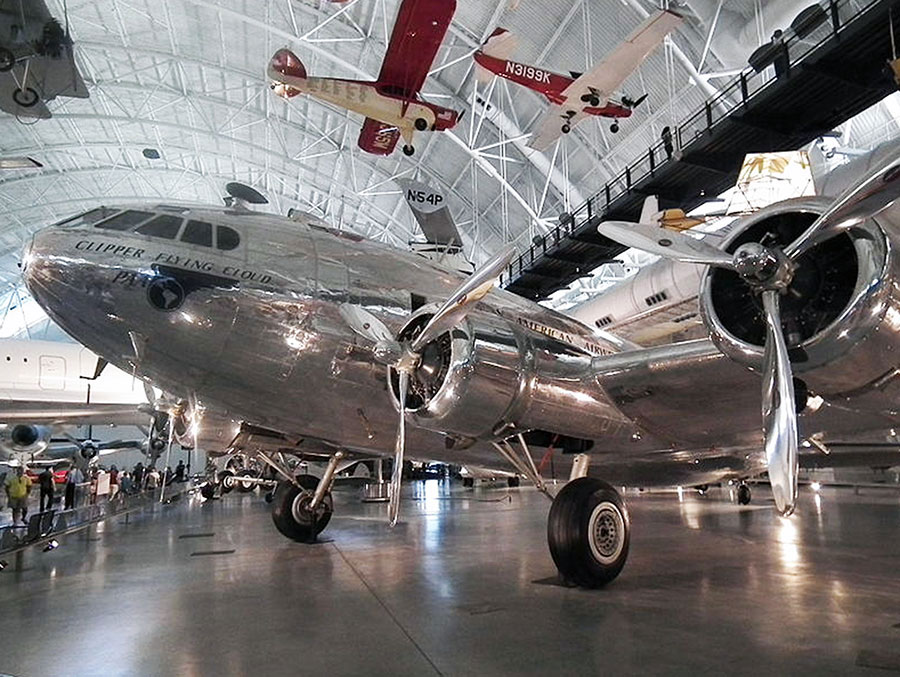Clipper Flying Cloud

When Brownsville Pushed the Envelope
Flying south from Brownsville, to the mountainous regions of Mexico, Central America, and South America was to journey into lands with a full range of terrain. Pan Am's routes led to coastal cities near or at sea level, but also to places like Mexico City and Bogota, situated many thousands of feet up.
On a commercial aircraft carrying passengers into and across high mountains, it would be a real advantage to operate an aircraft that had a pressurized cabin. Flying above 10,000 feet for very long was tough on passengers and crew in an airplane like a DC-3, which was rugged, but unpressurized.
When Boeing decided to make a pressurized commercial airliner built around the wing structure of it's proven military aircraft, the Boeing B-17 bomber, two airlines signed up as customers: TWA and Pan Am. The technology for turbocharging the engines to operate at high altitudes was well understood, but the engineering around the pressurization of the cabin was something new for commercial transports.
As with the advent of practical instrument flight techniques, Brownsville would be the nexus for Pan Am's introduction of this new technology. With a range of 1,250 miles, the new Boeing B-307, dubbed the "Stratoliner," was not capable of spanning oceans, but would work well in flights to and from South America.
In February 1940, Boeing's famed test pilot Eddie Allen and Pan Am's Francis Jacobs flew the airline's first B-307 down to Brownsville. In May, the plane was put into service from there to Mexico City. Unfortunately, the takeoff performance at Mexico City's 7,700 foot-high airport was underwhelming. After a quick trip back up north to Washington DC, where the aircraft was christened Clipper Flying Cloud, she was returned to Brownsville, where the fully loaded plane broke through the asphalt tarmac.
It wasn't long before the "Stratoliner" (and her two sister ships that Pan Am purchased) was sent off to Miami, where they were based until World War Two ended all airline business as usual, and like all of Pan Am's other aircraft, they were drafted for war work.



